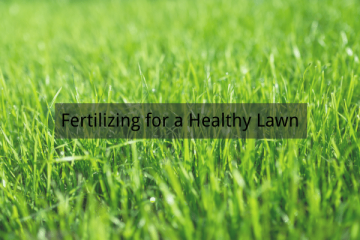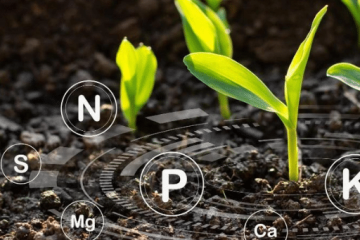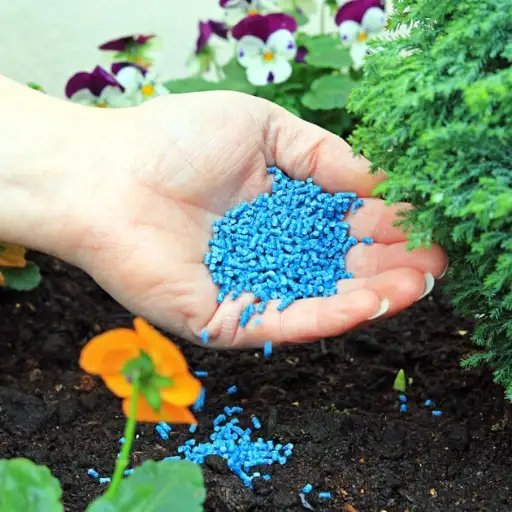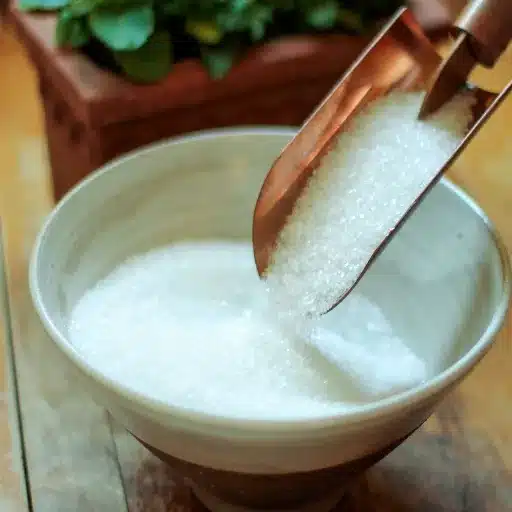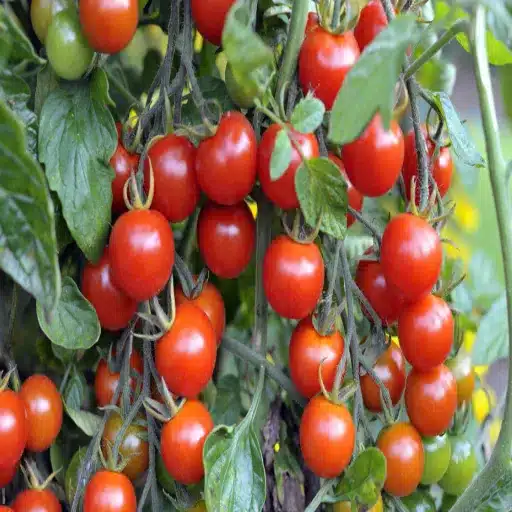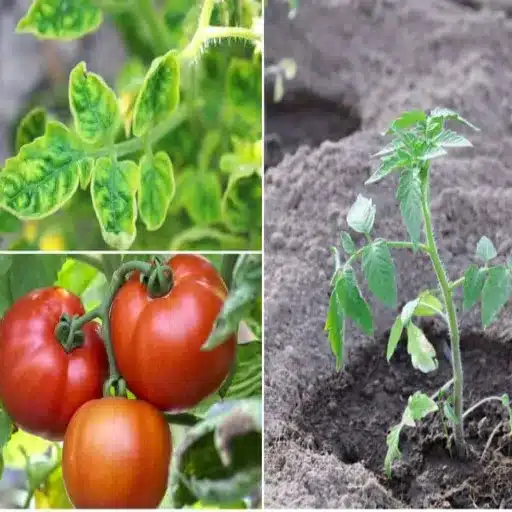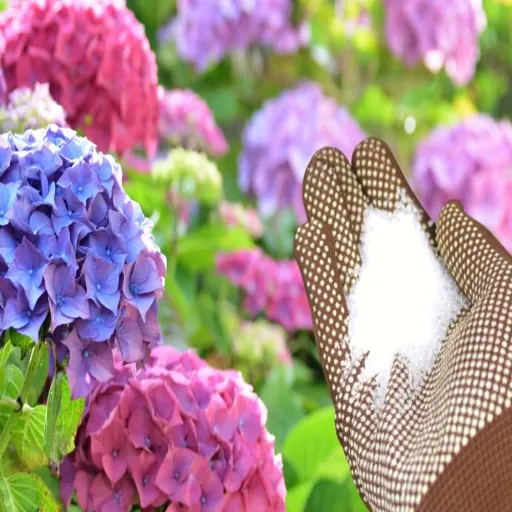Fertilizers play a critical role in fostering healthy plant growth, and understanding their composition is essential for achieving optimal results. One of the most versatile and widely used formulations is 10-30-10 fertilizer, a water-soluble blend designed to strike a precise balance between nitrogen, phosphorus, and potassium. But what sets this formulation apart, and how can it be utilized effectively to encourage vibrant blooms and lush foliage? This guide will explore the scientific principles behind 10-30-10 fertilizer, its unique nutrient profile, and the best practices for implementation in various gardening and agricultural scenarios. Whether you’re a seasoned horticulturist or new to plant care, this article will provide the insights you need to maximize plant health and performance. Stay tuned as we break down the specifics and uncover how this fertilizer can be your ally in achieving thriving, picture-perfect greenery.
What is 10-30-10 Fertilizer?

Composition and Nutrient Ratio
The 10-30-10 fertilizer is a type of NPK (nitrogen, phosphorus, potassium) fertilizer with 10% nitrogen (N), 30% phosphorus (P), and 10% potassium (K) by weight. The numbers stand for the three primary macronutrients for plant growth and development. Each of the three nutrients serves a specific, critical function toward the healthy growth of plants:
- Nitrogen (10%): Nitrogen is essential for the development of leaves and stems. It enhances lush green foliage by promoting the production of chlorophyll and is vital when plants are in the vegetative growth stage.
- Phosphorus (30%): Because it contains 30% phosphorus, this fertilizer is very high in concentration to encourage root development and flowering. Phosphorus caters to the transfer of energy in plants, further strengthening the root system and contributing to the production of flowers and fruits.
- Potassium (10%): Potassium improves plant health by enhancing disease resistance, water regulation, and strong stem development. It also aids in nutrient transport and photosynthesis, which helps build resilient plants.
The phosphorus-heavy 10-30-10 is especially great for plants that are in their infancy or need a bit of extra phosphorus to bloom and form roots. For this very reason, it is often selected for flower gardens, vegetables, and seedlings. The application instructions by the manufacturer must be followed so as not to overfertilize and for maximum results to be achieved. Proper application is the key to making use of this ratio on the plant and gaining the fullest benefit.
Understanding the 10-30-10 Ratio
The 10-30-10 fertilizer ratio is a special blend designed to promote specific stages of plant growth, mainly early growth and root establishment. The numbers stand for the percentage of Nitrogen (N), Phosphorus (P), and Potassium (K), which are the essential macronutrients for any plant. Nitrogen helps in growing leaves, phosphorus helps with root growth and the production of flowers, and potassium increases the strength and ability of the plant to survive under any kind of stress.
The ratio best suits young plants and freshly established seedlings, as phosphorus is vital for cell division, root elongation, and flower or fruit development. The moderate nitrogen level reduces the chance of excessive growth of leaves, lest the plant itself be encouraged to put too much energy into root and bloom growth. Potassium, even in the small amount given, acts to stabilize enzymes and build resistance through enzymatic processes.
For best results, be sure to follow the manufacturer’s instructions, for overapplication can lead to nutrient imbalance or burning of the plants. Generally, the fertilizer is applied at the beginning of the growth phase and further during flowering to resist nutrient depletion. The soil should preferably be moist before application; closely observing the plant’s response thereafter may be needed to adjust the application rate and frequency.
Benefits of 10-30-10 Fertilizer
Advantages for Blooming Plants
- Promotes Flower Development: The relatively high phosphorus content (30%) of 10-30-10 fertilizer contributes magnificently to the presence of innumerable and radiant flower blooms. Phosphorus contributes to energy transfer and other metabolic processes; thus, it directly influences flower size and intensity of colors.
- Stronger Root System: Being a fairly balanced fertilizer, it works towards the development of roots with its major focus on blooms. The phosphorus in the formula stimulates root growth so that the plant can absorb nutrients more efficiently, thereby producing better blooms.
- Better Nutrient Absorption: Potassium (10%) present in the formulation enhances the absorption of essential nutrients and water by the plant. This, in turn, guarantees continuous development into sturdy flowers and deters stunting during the blooming stage.
- Increase Flowering Period: The nutrient ratio of 10-30-10 extends flowering by providing a steady supply of energy for the plants, which otherwise would lead to premature wilting. It has been further proven that fertilizers high in phosphorus can increase the flowering period by almost 25% under ideal conditions.
- Enhance Stress Resistance: Potassium also recruits the plant’s resistance to environmental stresses such as drought and temperature fluctuations. This would be a sensible improvement during the flowering period when plants are quite sensitive to such external conditions.
Impact on Root Development
Establishment of a good root system is essential for the health and productivity of the plants. Root systems are the primary interface between plants and soil environments through which water and essential nutrients are absorbed. Phosphorus is one of the most important macronutrients for influencing root development. Many agricultural investigations have shown that phosphorus encourages root elongation and root biomass by enhancing cell division at the root tips. Hence, it is a very large and efficient root network that provides enhanced capability to the plant to tap moisture and nutrients from deeper soil levels.
Potassium also plays a supporting role in root development by helping to regulate the osmotic pressure inside plant cells. Maintaining cell turgor is central to this function, thus enabling roots to access various soil environments effectively. In capacities lacking potassium, experiments have shown that there are often less developed root structures, which results in lower drought resistance and decreased abilities of nutrient uptake. When the soil is enriched with potassium together with phosphorus, lateral root development is greatly enhanced to form a much more branched and expanded root system. Such a combined nutrient treatment is particularly critical in important crops like wheat, maize, and soybeans under less than optimal growing conditions.
Mycorrhizal associations are another important factor affecting root development. Mycorrhizal fungi live symbiotically with plant roots by extending their reach into the soil through a network of hyphae. Fungi are very efficient at nutrient mobilization, most important being phosphorus. Nowadays, agronomy employs mycorrhizal inoculants alongside phosphorus fertilizers to enhance root-zone efficiency. Using these innovative means, the industrial agricultural sector wants to stimulate superior root growth while minimizing fertilizer inputs as much as possible, thereby sustaining these processes for a long period.
Suitability for Different Soil Conditions
Applications of mycorrhizal inoculants prove highly adaptable under diverse soil conditions, responding to the needs of different agricultural settings. Under sandy soil conditions, where low water retention and low nutrient availability often present a hindrance to crop productivity, mycorrhizal association may assist in water uptake also efficient transfer of nutrients, especially phosphorus and micronutrients such as zinc and copper. This mechanism counteracts the naturally low nutrient status of sandy substrates to ensure that plant growth periods are more regular and yields are adequate. In compacted or clay soils, mycorrhizae assist in improving soil structure by forming aggregates through networks of fungal hyphae, allowing higher aeration potentials and infiltration rates. This allows the root systems to penetrate the deeper soil layers, making plants resistant to waterlogging and suffocation.
Acidic soils with low pH and high aluminum toxicity can also be amended by mycorrhizal application. The fungal association improves aluminum toxicity and enhances phosphorus solubilization in these difficult situations. Furthermore, this tolerance to soil acidity helps avoid excessive use of lime, which could deteriorate soil structure with time. In contrast, in saline soils where ionic imbalances and osmotic stresses dominate, mycorrhizal fungi help in the osmotic adjustment of host plants by stabilizing ion concentrations within the cytoplasm and improving their survival under saline stress.
While the application of mycorrhizae indicates a broad spectrum of applications, their efficiency can be further enhanced by complementing them with specific agronomic practices. For instance, reduced levels of synthetic fertilizers, crop rotation systems, and organic matter amendments could boost the growth-promoting effects of mycorrhizae on soils of varied types. Mycorrhizal species are also an essential factor in this mix as some have been found to have high host-specificity and adaptability to environmental conditions. Consequently, the knowledge of soil analytics with microbial compatibility constitutes an essential part of accessing their full potential within conventional and precision-based agricultural frameworks.
Application Techniques for 10-30-10 Fertilizer
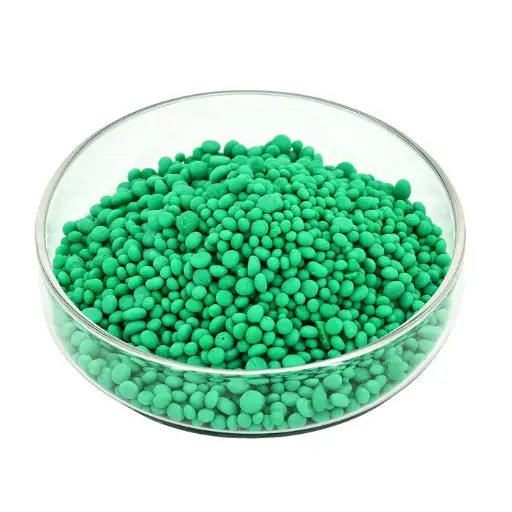
Step-by-Step Application Instructions
- Conduct Soil Testing: Start with a thorough soil test to analyze nutrient levels and deficits, for it is with precise soil analysis that an accurate rate of 10-30-10 fertilizer can be applied per the crop’s exact requirements.
- Calculate the Application Rate: Use soil test results to calculate the rate at which fertilizers are to be applied. The normal rate of application of 10-30-10 varies with crop type, growth stage, and existing level of soil fertility; typical recommendations, however, are from 150 to 400 pounds per acre depending on demand for nutrients.
- Choose the Application Method: Decide on the method of application. Broadcast fertilizer is applied before planting. Banding or side-dressing places nutrients nearer to the plant roots at critical growth stages. Fertigation by irrigation systems can provide delivery for liquid formulations.
- Time the Application: Nutrient uptake is considerably influenced by timing. The fertilizer 10-30-10 is usually applied early in the growing season when most crops are forming roots, since it is rich in phosphorus. Split applications would be considered to provide nutrients over an extended period and to reduce leaching potential.
- Apply uniformly: Fertilizer must be evenly applied in the area to avoid nutrient imbalance. Use a calibrated spreader or injector that can apply the rates evenly, especially in precision agricultural systems.
- Irrigate Appropriately: Irrigation after application serves to activate the fertilizer, dissolving the granules and moving the nutrients into the root zone. While doing this, care should be taken not to over-irrigate since it would cause loss of nutrients through runoff or leaching.
- Monitor Crop Responses: Observe both plant growth and soil conditions regularly after fertilizer application. Be ready to make adjustments as required in plant nutrient uptake, environmental factors, and indications of overapplication or deficiency.
- Maintain Records: Prepare records of all application details, including rates, timing, applications, and their results. These records will aid in adjusting later applications and nutrient management for further efficiency.
By following these steps, growers can maximize the effectiveness of 10-30-10 fertilizer and achieve balanced nutrient availability for sustainable agricultural production.
Proper Dosages and Schedules
Accurate dosage and schedule for 10-30-10 fertilizer are vital to maximize a plant’s health and yield. Generally, dosage ranges between one and two pounds per 1,000 square feet, depending on the kind of crop, condition of soil, and growth stage. For agricultural fields, the rates are calculated per acre, ranging between 30-60 pounds. Conducting a soil test before application is thus necessary to assess the existing nutrient levels in the soil. It is thus ensured that 10-30-10 fertilizer, along with phosphorus and potassium, does not exceed what the soil requires.
The timing should be coordinated with the growth phase to provide optimum nutrient uptake by the plants. For most crops, it means fertilizer applications when plants are in the early development stages, pre-planting, or the early vegetative growth phase. At this stage, phosphorus supports the establishment of roots and early shoot vigor. Split applications are best, usually for crops that take a longer time to mature, since it prevents leaching of nutrients and sustains growth.
Soil type, weather conditions, and irrigation method affecting the performance of the product must also be factored in when setting up the fertilization schedule. For example, sandy soils with lower nutrient-retention capacities are likely to require smaller but more frequent applications. This helps to reduce nutrient losses. Conversely, crops cultivated in high-rainfall regions may do well with applications following heavy precipitation to counteract nutrient losses. Coupling these endeavors with real-time data sourced from advanced precision agriculture tools such as sensors or drone-based imaging presents the opportunity to make data-driven adjustments that increase efficiency and crop performance.
Using 25lb Bags Effectively
25lb bags, whether for fertilizers, soil amendments, or seeds, require perfect planning and application to ensure maximum efficacy and minimal waste. Maybe the first thing to do here is to calculate the exact requirements per field size, crop, and soil test data so as not to over- or under-apply. Tools such as digital weighing scales and calibrated spreaders can then be employed to evenly spread out the contents of one bag over the entire application area.
For fertilizers, another boon is the application of fertilizers in tandem with precision agriculture techniques in tandem with 25lb bags. Using such advanced aids as GIS mapping and variable rate application systems can delineate nutrient zones so that placement of nutrients is strategically done only where needed. It is also paramount to check the conditions under which the 25lb bags are being stored to ensure the integrity of the product. Store the bags in a dry, temperature-controlled environment to preclude degradation or clumping, which can hamper application.
In sum, by marrying traditional agricultural practices with technology, 25lb bags can be used as a versatile option for both small- and large-scale agricultural ventures.
Avoiding Common Mistakes
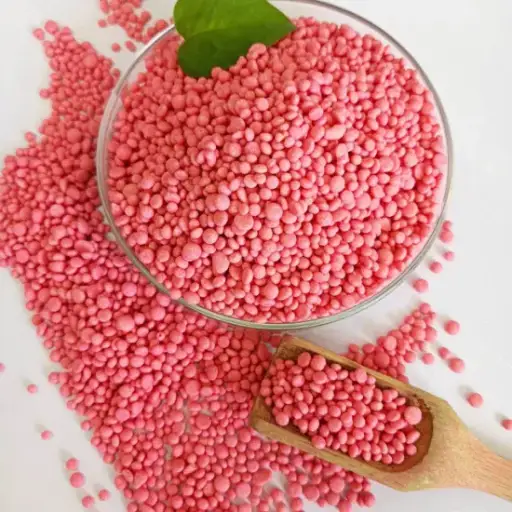
Over-Fertilizing and Its Consequences
Any excess fertilizer application leads to a kind of nutrient imbalance in plants, which could inhibit the growth of plants despite the abundance of resources available in the soil. The failure to promote proper crop growth through ample resource availability will only compound the lessening yield and agro-death symptoms with visible evidence of wilting, leaf burn, or stunting in growth. Over-fertilization changes soil pH levels chemically, so a leftover soil would be less suitable for onward planting.
Nutrient runoff beyond your fields is one of the important consequences that go with over-fertilizing. Excess nitrogen and phosphorus are washed off into a nearby water system by rainfall or irrigation, thereby kick-starting the menace of eutrophication. It causes the excessive bloom of algae in the water bodies, thereby suffocating these ecosystems in oxygen and leaving them to die. Similarly, over-fertilization is responsible for a greater share of greenhouse gases when nitrous oxide is implicated; this, in turn, is extremely detrimental to climate change.
I made much effort in reducing risks that are posed by over-fertilizing by using soil-testing and precision agriculture methods. Testing the soil for nutrients before fertilizer application allows me to apply fertilizer as per the needs of the crop, thus avoiding wastage and environmental damage. With record-keeping and evaluation of results, I could restrict unsafe practices that promote crop yield at the expense of the soil and ecosystem health in the long run.
Identifying Unsuitable Conditions
The recognition of unsuitable growth conditions for crops is of utmost importance if sustainability and efficiency in agriculture are to take place. Unsuitable conditions can originate from many reasons, such as nutrient imbalances, soil compaction, improper drainage, or pH imbalances that somehow affect or impede plant growth. Using technology currently available, such as soil testing and Geographic Information System (GIS) mapping, farmers can locate specific areas in their fields that require attention. Soil testing will show a deficiency or toxicity of nutrients in a given soil and will prescribe the aim of correcting the deficiency through the most appropriate fertilization method possible in terms of type and quantity; this helps to prevent an over-application of fertilizer and the associated problems that may follow environmentally.
Similarly, unfavorable climatic conditions, such as extended droughts, excessive rainfalls, or abnormal temperature ranges, very much contribute to the deterioration of crop productivity. With predictive analytics and weather forecasting tools, farmers could find ways to prepare in time. For instance, data-driven insights promote crop adaptation strategies by helping to select drought-tolerant cultivars, scheduling planting at the right time, or irrigating appropriately when rainfall is lacking. This proactive stance on considering climate-induced stress factors in cultivation would ensure better stability in crop productivity over a temporal scale, especially in regions considered hot spots of variable weather in terms of climate change.
Finally, pest and pathogen attacks are another critical dimension of unsuitable conditions. Through precision agriculture that integrates remote sensing, automated monitoring systems, and data analysis tools, these infestations can be detected and dealt with in real time. In this way, farmers can target control measures, limiting widespread pesticide applications that would otherwise affect both the harmful and beneficial organism populations. When these practices are combined with modern agricultural research, a systematic approach toward the identification and control of unsuitable farming conditions can be assured, preserving the environment on the one hand and ensuring economic sustainability on the other.
Tips for Proper Dilution
Proper dilution is important to guarantee the effective and safe application of agricultural products, such as fertilizers, pesticides, and herbicides.
- Follow Manufacturer Guidelines: Always follow dilution rates given on product labels. Concentrations given are usually tested thoroughly to strike a balance between efficiency and safety, with less chance of harming crops and the environment.
- Measure Accurately: Use calibrated equipment such as graduated cylinders or digital scales to take accurate measurements of the substance and the amount of water. Any deviation from accurate measurement may contribute to underdilution (inefficient treatment) or overdilution (toxic to plants or environmental hazards).
- Consider Water Quality: Analyze factors such as pH, hardness, and impurities of the treatment water to ascertain the stability and solubility of the chemical in question. For example, very alkaline water might degrade the active ingredients of some pesticides, thereby reducing their effectiveness.
- Add Chemical Gradually and Mix Well: In smaller quantities, add the chemical to the water, stirring constantly. Consistent stirring helps to keep concentrations uniform, as variations in concentration may negatively affect the application.
- Wear Suitable Personal Protective Equipment: Always put on personal protective equipment (gloves, goggles, and masks) while diluting chemicals.
- Prepare the Volume Required for Immediate Dilution Only: Calculate the solution quantity with the intent to use it immediately. This avoids wastage and other problems related to storage, such as further degradation or contamination.
Such systematic practices, enforced as standards of the industry, help maximize the efficiency of agricultural products while setting forth sustainability and safety.
10-30-10 Fertilizer in Different Settings
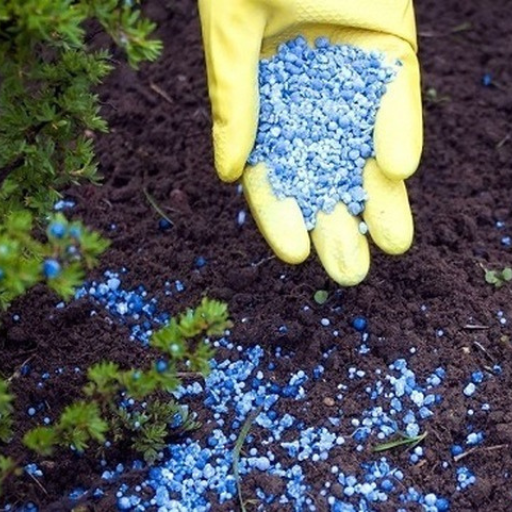
Using 10-30-10 in Gardens
The 10-30-10 fertilizer is applied with certain beneficial effects in gardens for developing roots and ensuring the best plant health, especially in their early life stages. With high phosphorus content, this fertilizer formulation encourages the growth of a strong root system. Gardeners apply 10-30-10 fertilizer mostly while planting to improve seedling establishment and flowering.
The dosage depends on many factors such as the plant species, soil composition, and levels of nutrients already present. In most garden setups, one tablespoon of 10-30-10 fertilizer mixed in a gallon of water is recommended to be applied at the base of the plants. Before application, soil testing is very important to ascertain the availability of phosphorus, thereby ensuring phosphorus deficiencies or imbalances are not induced. However, overuse of phosphorus fertilizers like 10-30-10 can cause several environmental problems due to runoff and eutrophication of water bodies nearby.
Always monitor plant health and adjust the use accordingly to its seasonal growth pattern for better results. The use of 10-30-10 combined with organic approaches like adding compost or mulch can eventually help improve soil structure and sustain the garden during the long haul.
Application for Lawns and Agricultural Use
Detailed below are more specific applications of this fertilizer in the agriculture and lawn care sectors:
- Establishing New Lawns: When seeding or laying sod, 10-30-10 fertilizer provides an ideal nutrient profile to encourage root establishment and rapid growth. Typically, applying 1 to 1.5 pounds of fertilizer per 1,000 square feet during initial soil preparation promotes optimal root penetration and grass coverage.
- Pre-Planting for Row Crops: For agricultural row crops such as corn or soybeans, applying 10-30-10 in the planting furrow ensures a concentrated supply of phosphorus, critical for early root and shoot development. Application rates often fall between 100 to 200 pounds per acre, adjusted based on soil phosphorus levels determined through testing.
- Turf Maintenance in Early Spring: Early spring fertilization with 10-30-10 benefits cool-season grass species by replenishing phosphorus reserves depleted over winter. For established lawns, applying approximately 0.5 to 1 pound of nitrogen per 1,000 square feet ensures an even and healthy green-up phase.
- Horticultural Crops in Growth Stages: Fruit-bearing crops like tomatoes, peppers, and strawberries benefit from the high phosphorus content during the flowering and setting stages. A localized application to the root zone at 2 to 4 pounds per 100 square feet ensures effective uptake without waste.
- Pasture Revitalization: Overgrazed or low-fertility pastures require a strategic approach to restoring soil nutrient levels. Broadcasting 10-30-10 at a rate of 75 to 150 pounds per acre in tandem with reseeding can rejuvenate growth and improve forage quality for livestock.
Proper calibration of fertilizer spreaders and observation of recommended fertilizer application rates are necessary to avoid over-application and runoff while ensuring protection of the environment by commissioning these measures.
Starter Fertilizer for New Plantings
Starter fertilizers are products uniquely created to supply plants with essential nutrients needed to support their growth at the early stages. Typically, there will be nitrogen (N), phosphorus (P), and potassium (K) in these fertilizers, but in varying proportions from one composition to another. Phosphorus will most often have the highest amount in an application of any fertilizer because this element is needed for root development. Common formulation percentages for phosphorus are 10-20-10 or 12-24-12, applied at rates varying mostly anywhere from 40 to 80 lb/acre as specified by soil test recommendations and prevailing environmental conditions.
The maximum effects of the starter fertilizer can be achieved when it is applied close enough to the seed to offer nutrient availability, yet not in direct contact with the seed. The exact methods of application could include banding or side-dressing. Each technique allows for real-time nutrient availability while decreasing the chances of seedling damage that could be brought about by salt stress. Also, further evaluation would show that phosphorus uptake efficiency is greatest within the first few weeks of crop growth; therefore, application timing and placement should always be carefully considered.
The other approach comes through precision agriculture, which tries to refine fertilizer application given soil variation. Through the use of soil test information and variable rate technology (VRT), nutrient application can respond to specific field conditions under which crops are grown. In this manner, nutrient use efficiency is maximized, and hazards to the environment are minimized. Therefore, these methodologies are good for sustainable agriculture in that they promote smart crop production and environmental stewardship.
References
Frequently Asked Questions (FAQ)
Q: What is 10-30-10 fertilizer used for?
A: 10-30-10 fertilizer is primarily used for promoting vigorous growth in flowering plants and other types of plants that require high levels of phosphorus, which is essential for root development and blooming.
Q: How does 10-30-10 fertilizer compare to other types of fertilizer?
A: Compared to 10-10-10 or 30-10-10 fertilizers, 10-30-10 has a higher phosphorus content, making it ideal for encouraging flowering and fruiting in plants. It’s formulated to provide specific nutrients tailored to the needs of different plants.
Q: Can I use 10-30-10 fertilizer on ornamental shrubs?
A: Yes, 10-30-10 fertilizer can be used on ornamental shrubs to enhance their growth and flowering capabilities. The high phosphorus content helps in developing strong roots and vibrant blooms.
Q: How should I apply 10-30-10 fertilizer?
A: 10-30-10 fertilizer can be applied as a granular product or mixed with water for a soluble spray. It’s essential to follow the recommended dose, usually measured in pounds per 100 square feet or per gallon of water, depending on the type of plant.
Q: What are the benefits of using a high-nitrogen fertilizer like 10-30-10?
A: While 10-30-10 is not high in nitrogen compared to others, it does contain enough to support healthy green growth. This balanced approach ensures that plants get the necessary nutrients for both foliage and flowering.
Q: Is 10-30-10 fertilizer suitable for all types of plants?
A: 10-30-10 fertilizer is not suitable for all types of plants. It is particularly beneficial for flowering plants and those that require additional phosphorus. For leafy plants, a different kind of fertilizer with higher nitrogen content may be more appropriate.
Q: What is the recommended dosage of 10-30-10 fertilizer?
A: The recommended dosage of 10-30-10 fertilizer varies based on the specific plant and its growth stage. Generally, it’s advised to apply it at a rate of 1 to 2 pounds per 100 square feet or as per the instructions on the product label.
Q: Can I fertilize my plants with 10-30-10 during their entire life cycle?
A: While you can use 10-30-10 fertilizer during certain stages of a plant’s life cycle, it’s crucial to adjust fertilization based on the plant’s specific needs. For example, during the vegetative phase, a higher nitrogen fertilizer might be more beneficial.
Q: Are there any trace elements in 10-30-10 fertilizer?
A: Yes, many formulations of 10-30-10 fertilizer include chelated micronutrients or trace elements that support overall plant health. These micronutrients are essential for various physiological processes within the plant.
Q: What types of fertilizer are best for shade-loving plants?
A: While 10-30-10 fertilizer can be used in shaded areas, plants that thrive in shade often benefit from a balanced fertilizer like 10-10-10, which supports both greens and blooms without overwhelming the plant with phosphorus.

